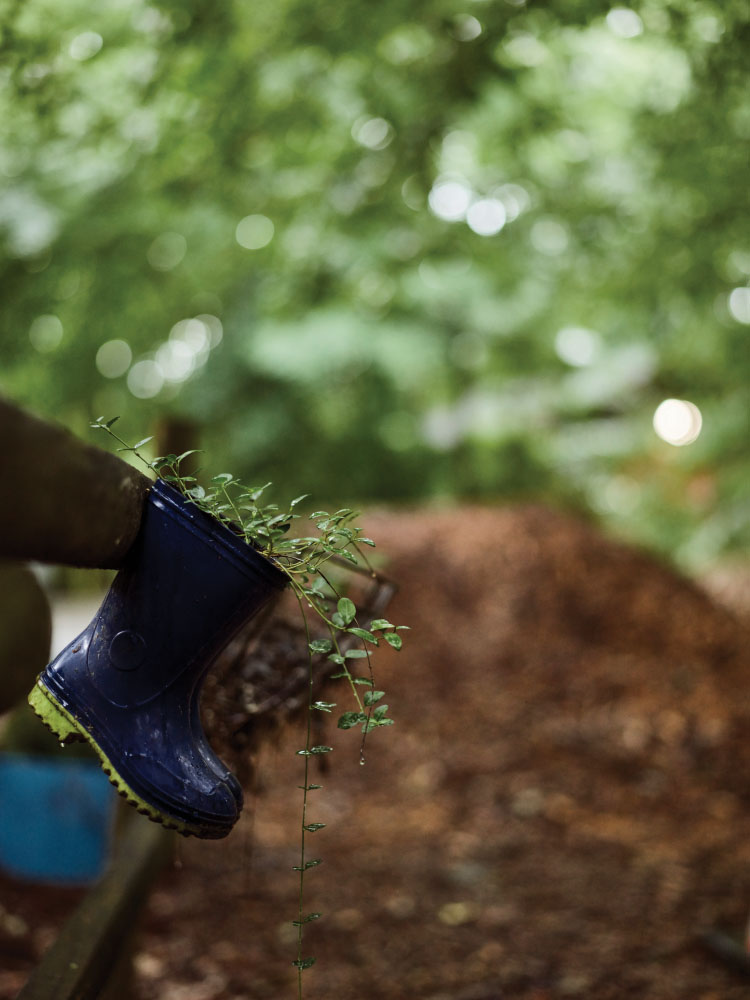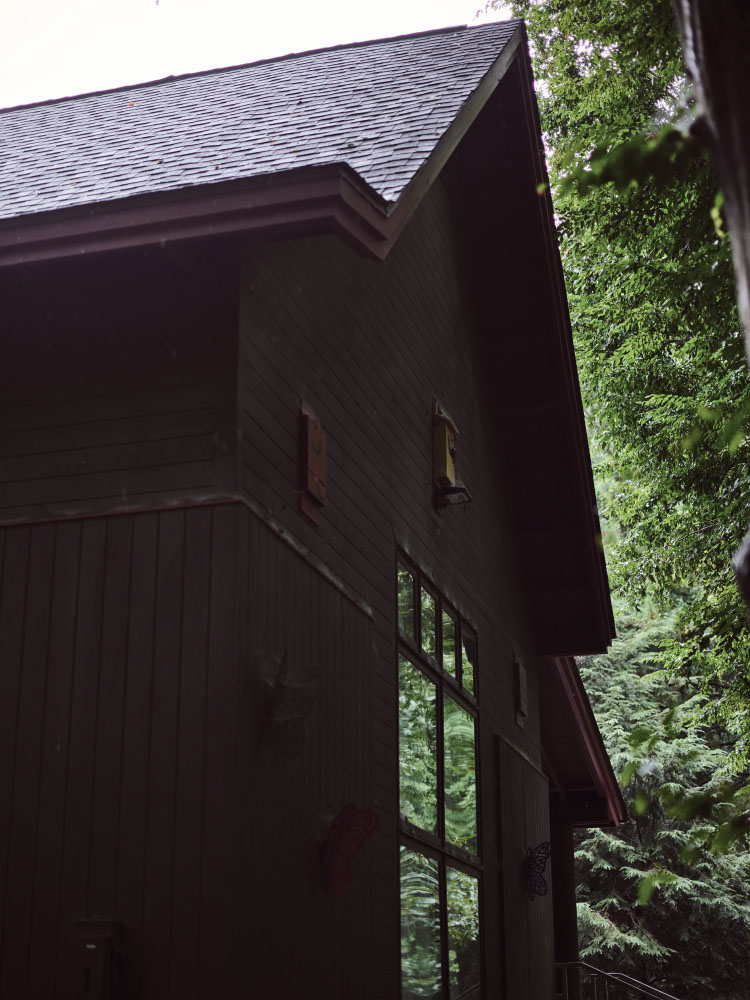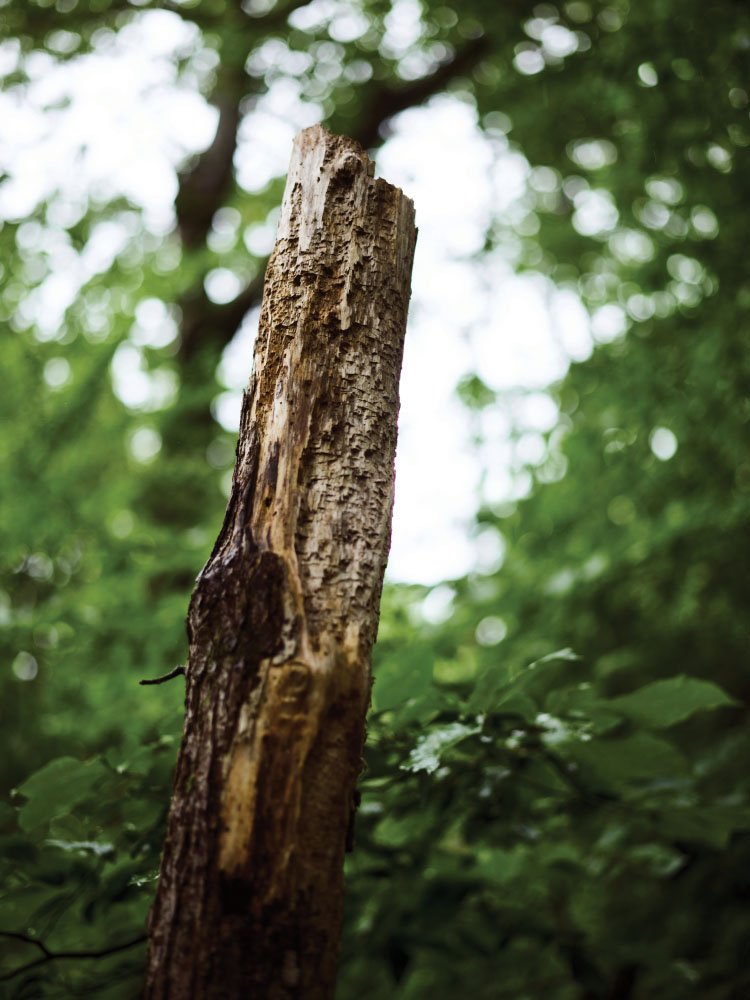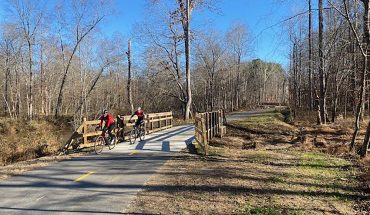Just a few miles from downtown Raleigh, a nature preserve offers leaf-softened trails and majestic views of a pocket of Eastern Hemlock trees
by Ethan Harrell & Ayn-Monique Klahre | photography by Joshua Steadman
Most of the time, you’d have to drive at least three hours for mountain views. But at Hemlock Bluffs Nature Preserve in Cary, you can find something similar, much closer: here, the trails and overlooks offer big changes of elevation, leaf-softened pathways, and majestic views of trees. “When you hike here, you feel like you’re in the mountains,” says Laura White, secretary of the Friends of Hemlock Bluffs. “You feel transported.” And unlike the actual mountains, which can be treacherous, intimidating, and hard for young ones, the trails at Hemlock Bluffs offer easy walks for a range of hikers.
Hemlock Bluffs was dedicated as a state nature preserve in 1976, and the town of Cary took over operations in the 1980s (North Carolina still owns much of the acreage, but leases this land to the town). The majority of the 140-acre preserve is dedicated to observation, study, and education, but it’s also a popular spot for a shady walk and for kids to interact with nature. “The typical park in the Cary system is more geared toward recreation, but here we’re all about research,” says Mark Johns, the park’s operations and program supervisor. “The rules are strict here to preserve the natural areas; you can’t go off the trails or collect anything.”
The big draw at Hemlock Bluffs is, not surprisingly, the Eastern Hemlock trees. While native to the eastern United States, the large evergreens are typically only found in the western part of the state. “We have 250 or so hemlocks here, the only place where they’re naturally growing in the state outside of the mountains,” says Johns. He points to the bluff face, which, because it faces north, is cooler and shadier — a spot where they can thrive. The trees themselves, combined with the bluffs, offer elevated views of the topography.
The park has over 4 miles of trails that route visitors from the floodplain around Swift Creek to the top of the bluffs (the peak point of 413 feet is one of the highest elevations in the area). There are also two wooden deck overlooks, which offer views into the forest. “On the overlooks, you’re at treetop height, so it’s a completely different perspective,” says White, who was also the supervisor at the preserve’s nature center for 22 years. “You can see birds lighting into the trees or find yourself eye-level with a racoon.”
Several outlooks along the trails offer varied views of the Eastern Hemlocks and Swift Creek at the base of the bluff for a mix of vistas of trees, clear skies, and forest floor. The Chestnut Oak Trail Loop, the park’s longest and most winding trail, at just over a mile, is where much of the park’s wildlife resides. “There are lots of plants and animals here for a small area. Maybe you’ll see birds, snakes, lizards, or a deer,” says Johns. In a normal year, Johns takes small groups off the trail into the undisturbed areas of woods through a variety of nature education programs. “We find hundreds of different things, whether it’s a cool insect under a log or a salamander near a pool,” he says.
Johns also manages the Stevens Nature Center, which is home to interactive nature exhibits highlighting the wildlife, vegetation, and waterways of the nature preserve. Renovations in 2020 included the Environmental Wall in the exhibit area, where guests are invited to learn about the park, the animals it houses, and preservation areas. During a typical year, the nature center offers educational programs and camps for both children and adults. Through these classes, guests can journey into the deeper areas of the preserve’s woodland with a park professional. And for the littlest ones, a small play area offers a chance to engage with nature.
“Since this is a preserve, we didn’t want a traditional playground, but we wanted a place where kids can enjoy nature,” says White. The simple space invokes fairy tales: a row of oversized mushrooms are perfect stepping stools, and there are logs for balancing, a little cabin to play house, a tunnel for climbing through, and picnic tables. “It warms my heart to see small children playing there,” says White.
It’s a well-visited park, especially lately, but still unknown to many who are new to the area or live outside of Cary. “Right now everyone just wants to be outside, and folks are in the mindset to visit a park on the weekends,” says Johns, who recommends weekday mornings if you want to walk the woods in solitude.
While Hemlock Bluffs offers spring wildflowers, a respite from the heat of summer, and quiet views in winter, White loves the park in fall for its foliage. “We get beautiful color,” she says. A walk in the woods, minutes from downtown Raleigh? We’ll take it.








